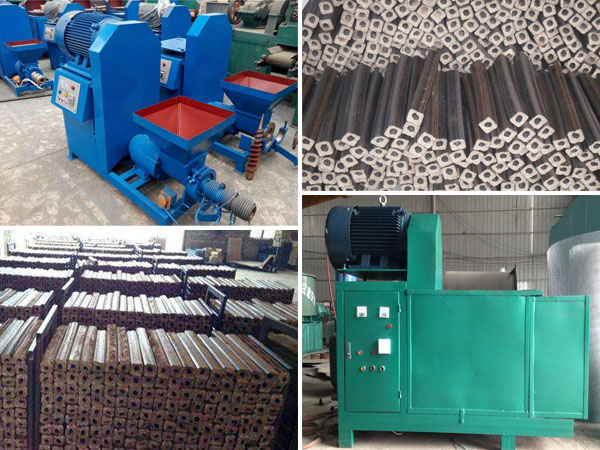Problems in the production of briquettes with sawdust briquette machine
The quality of briquettes produced by
sawdust briquette machine determines the sales price of the charcoal after carbonizing. The following are some problems in the production of briquettes with sawdust briquette machine:

1. The sawdust briquette machine can not produce briquettes: the heating temperature is too high or too low; the forming sleeve is seriously worn; the angle of propeller is not consistent; the moisture content of raw material is too large. When the briquette machine works normally, the briquettes are extruded evenly from the sleeve. The briquettes should be dark brown with uniform hardness, smooth surface without cracks. The surface of the center hole should also be smooth. (Get to know
how to make rice husk briquettes)
2. Bright surface: the section of the briquette is bright with good density but poor hardness. This is caused by too steep initial part of the first screw and it should be polished more smooth.
3. Surface cracks: excessive water content of raw materials can easily cause transverse cracks on the briquette body, while too little water can lead to longitudinal cracks. In addition, excessive heating temperature would cause excessive softening of raw materials, resulting in insufficient supply, which can also lead to cracks. The general solution to feed shortage is to increase the diameter of the screw, or grinding the screw wall to increase the gap between the screw.
4. Small density at the center of the briquettes or contains scattered sawdust: this is caused by the abrasion of the root diameter of the propeller shaft tip, which needs to be welded. Misalignment of the shaft tip can also cause the above problems, which need to be corrected at high temperature.
5. Gas returning: the gas is ejected from the feeding port of
briquette machine during production, mainly due to insufficient feed. It may also caused by too large moisture content of the raw material or insufficient heating temperature.
